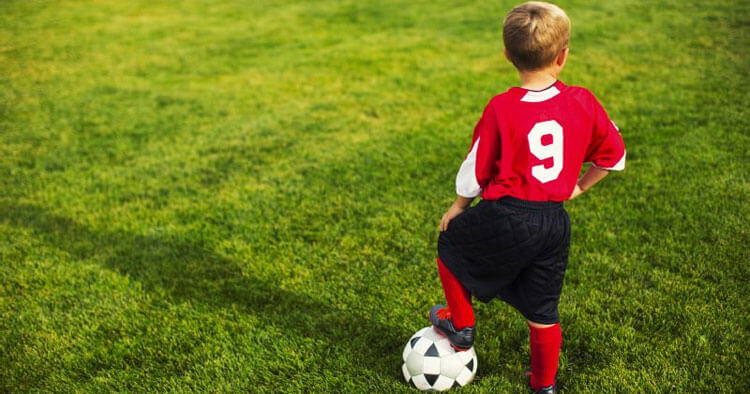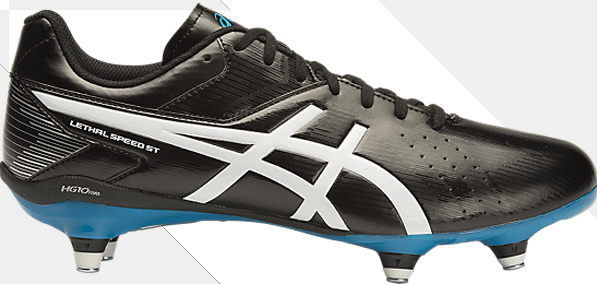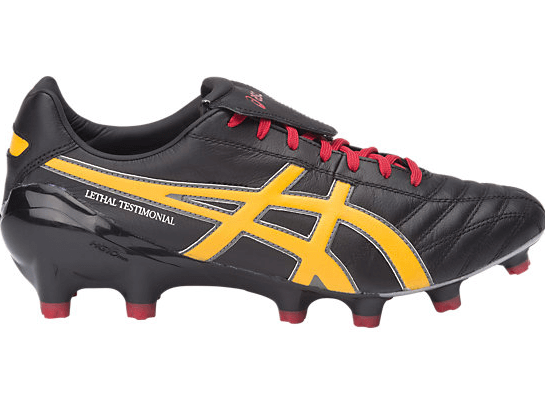Sports Injuries and Management
Football Boot Stud Patterns For Australian Playing Surfaces
What Football Boot Stud Patterns Should I Use?
When looking to purchase a new pair of football boots what you are ideally wanting to do is to match the football boot stud patterns to the surface you play on. Doing so will not only improve performance but will also help reduce injury risk. There are generally three main surface variations to consider that are played on here in Australia. What I aim to discuss are the main types of stud formations and what each different pattern is used for and this then flows on to how you can ensure you choose the right football boot stud pattern to reduce your injury risk and improve performance.
Playing Surfaces And The Relevant Football Boot Stud Patterns
Soft Ground: Soft ground playing surfaces suit the longest style of stud formation. The studs are generally screw-in and are made from nylon, or aluminum, or part thereof. They are great for wet and muddy conditions that require extra grip. With screw in studs the major benefit is that the studs are interchangeable, and come in variable sizes. This means they can be adjusted from week to week depending on the surface if more or less traction is required as the playing surface softens, or firms…
What Is A Screw-In Football Boot?
Instead of having a moulded stud pattern on the sole, a screw-in boot has studs that screw into the sole plate. This allows the studs to be changed at any given time, allowing the replacement of either worn studs, or the ability to change the length of the studs in the boot to better suit the conditions. Even to have different length studs from the back to the front of the boot.
The Advantages Of Screw-In Boots are that you can achieve better grip on soft grounds because you can have longer studs giving you traction in soft conditions. Screw-in studs can be up to 21mm in length rather than the normal 10 – 12mm of most moulded stud formations for firm ground. Another advantage is that with fewer studs on the sole plate of a screw-in boot (typically a screw-in boot has a 6-8 stud formation) mud doesn’t accumulate between the studs as easily as it would on a moulded boot which typically has more studs on the sole plate and gets easily clogged with mud. Screw-in studs are for ideal for soft grounds and often used by rugby union forwards who contest scrums and require extra grip for these scrummaging contests and need the traction longer studs provide.
The Disadvantages Of A Screw-In Boot are that because there are only 6-8 studs on the sole plate when playing on firm or hard ground where the studs don’t sink into the ground all of your body weight is going through 6-8 pressure points, which can cause discomfort on the sole of the foot and sometimes injury. It isn’t uncommon for footballers playing in boots with screw in studs on hard surfaces to suffer blood blisters under the ball of the foot near the big toe area, or get a fat pad irritation on the heel of the foot from the force of running being targeted through only a few points not distributed across a great surface area as in a moulded boot, or running shoe. Also if the studs are not sinking into the playing surface then these longer studs can create a situation where there is greater potential to sprain your ankle as the foot is sitting on a relatively higher platform and being knocked of balance by an opposing player, or small variations in the playing surface may cause the ankle to roll. As a rule, screw-in studs are both uncomfortable and dangerous when used on hard (and some firmer) playing surfaces and as a result this should be avoided whenever possible.
Firm Ground: Firm Ground stud patterns are designed so they perform best when playing on hard grass surfaces (non-muddy natural grass pitches). Although this stud pattern is not ideal for wet, or muddy conditions it will go OK on softer ground. This type of stud pattern is considered your general all-rounder for Australian weather conditions and is what the majority of football players wear in all codes.
Firm ground football boot stud patterns are made of rubber and are shorter than soft ground football boot stud patterns, yet they are slightly longer than hard ground stud formations. A typical firm ground stud length will be approximately 10 – 12mm at the heel and slightly shorter at the front of the boot. They have a multi-stud formation when compared to a screw-in soft ground pattern, so the impact load through the foot is distributed across multiple points rather than only the 6-8 points in a screw in boot as previously discussed. The actual design pattern of the sole plates vary from boot to boot and brand to brand, but are designed with the purpose of helping the athlete achieve good grip and release. Balancing both good grip to the playing surface, without sticking and failing to release when pushing off or pivoting is key. The sticking and failure of studs to release in football is attributed as a major cause of injury, specifically to the knee and ACL type sprains.
Hard Ground: Hard ground surfaces, including artificial grass, which here in Sydney is more and more commonly the playing surface soccer players of all ages are playing on these days, require football boot stud patterns that take pressure away from your joints and lower back. Football boot stud patterns with hard ground boots have lower profile studs and a greater number of individual studs when compared to both a screw-in and firm ground football boot. This lower stud height means it is a more stable boot on hard surfaces and less risk of rolling your ankle. The multiple stud formations are designed to distribute impact load when running on a hard surface, spreading it more evenly throughout the whole foot. And the low profile multi-stud pattern still provides excellent traction, without sticking and potentially causing injury.

Disclaimer: Sydney Physio Clinic provides this information as an educational service and is not intended to serve as medical advice. Anyone seeking specific advice or assistance on Football Stud Patterns For Australian Playing Surfaces should consult his or her physiotherapist, sports medicine specialist, football coach or sports store.




